A virtual pinboard that works
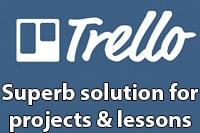
These days there are so many little tasks a busy classroom teacher need to keep track that it can almost be overwhelming, especially for a new teacher on their first placement! The good news is that there are free apps that can certainly support you and their ease of use makes it breeze to get started. One of the best solutions around for getting your class organised and on track is Trello. This is the kind of app that allows you to keep track of tasks and their due dates, assign these task to students or colleagues and provide resource links to further support material. The best bit is that Trello is collaborative, which means you can invite all of your students onto the platform where they can then see clearly what is needed and learn not only be organised but also learn to work together as a team.
The arrangement of Trello is somewhat reminiscent of Pinterest, in that you can produce a series of boards that describe a task. However, unlike Pinterest, you have the ability to produce checklists, due dates and more. Deployment of Trello in the classroom couldn’t be easier and it is available on desktop computers plus on iOS and Android devices via a downloadable app.
After setting up a free account, you can quickly create your first board.
In the example below we’ve named it ‘My science classroom’:
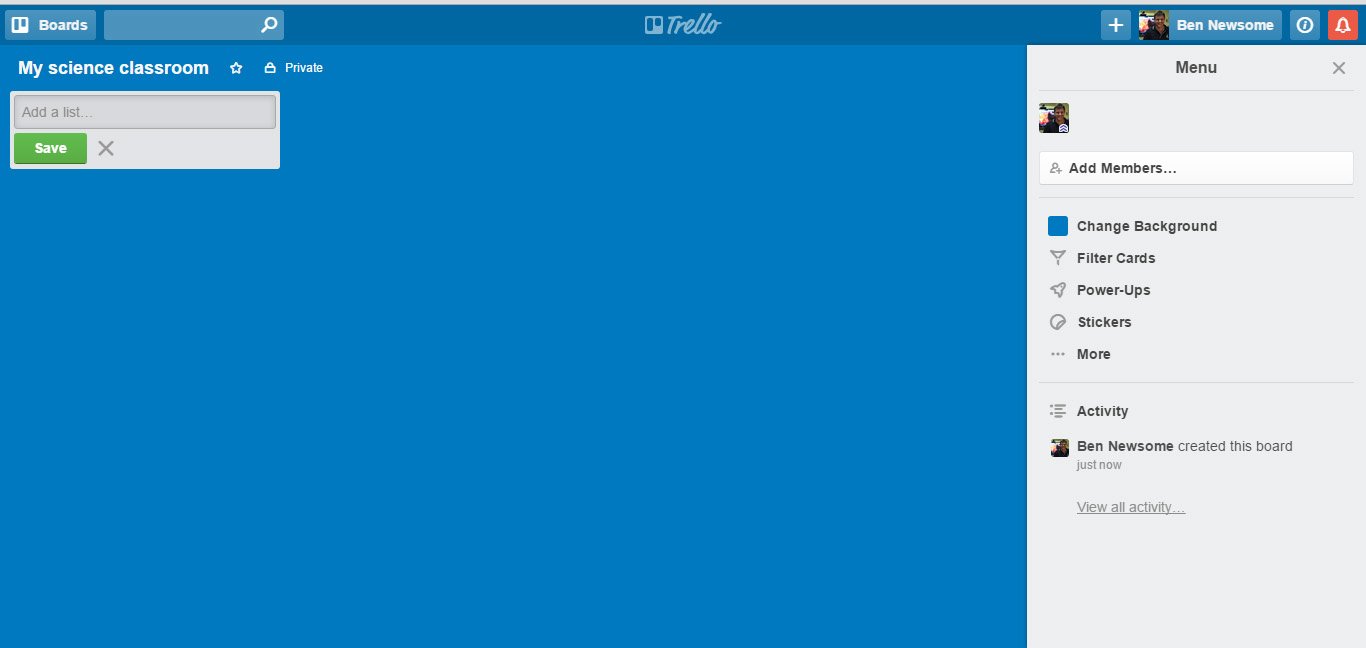
Using Trello in the classroom, a blank canvas to work from! (close view of the image)
Next, we start adding lists that you want students to contribute to (eg Weekly student tasks, Weekly newsletters, student projects etc). These lists need not be a task, they could be each Student’s name where you can begin to assign tasks directly to that student instead.
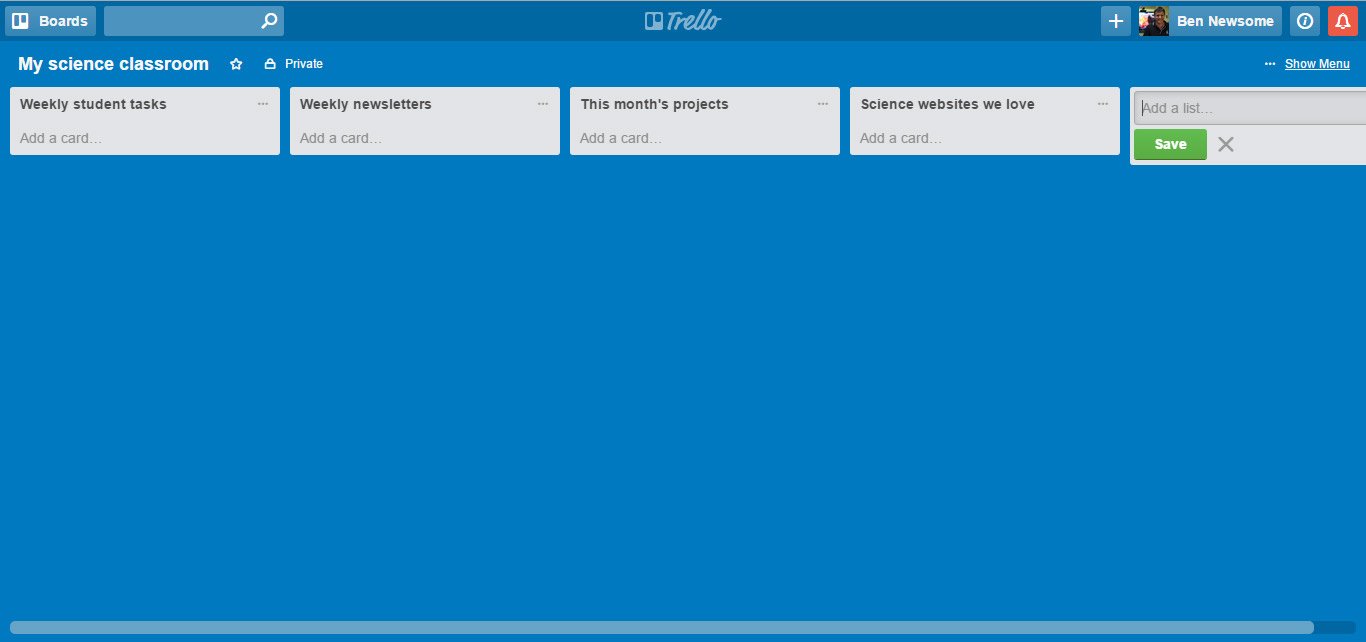
Plan your lists on Trello and move them around as needed (close view of the image)
Now the lists have been created, you can then start adding ‘cards’ to the lists that refer to the actual things that need to occur (eg: research solar energy, gather materials for the class project, hand in this week’s homework, water the classroom plants etc).
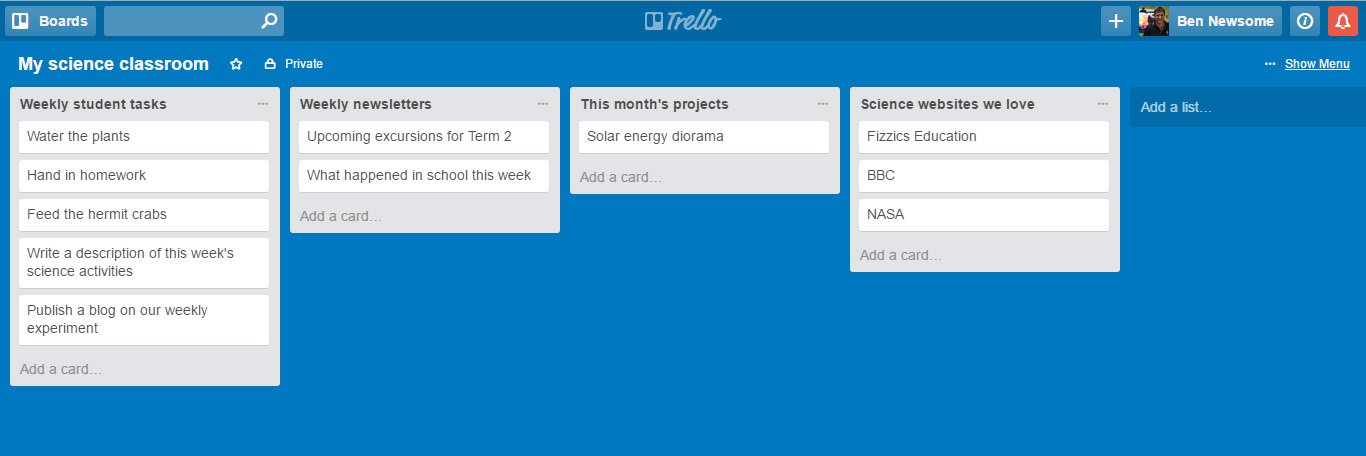
Start to populate your Trello lists with cards that define the tasks you want to be done (close view of the image)
If you click on any card you can assign the task to a group of students, add a due date, add a checklist, link to an attachment and more. These cards can be moved across to any list with just a press of a button.
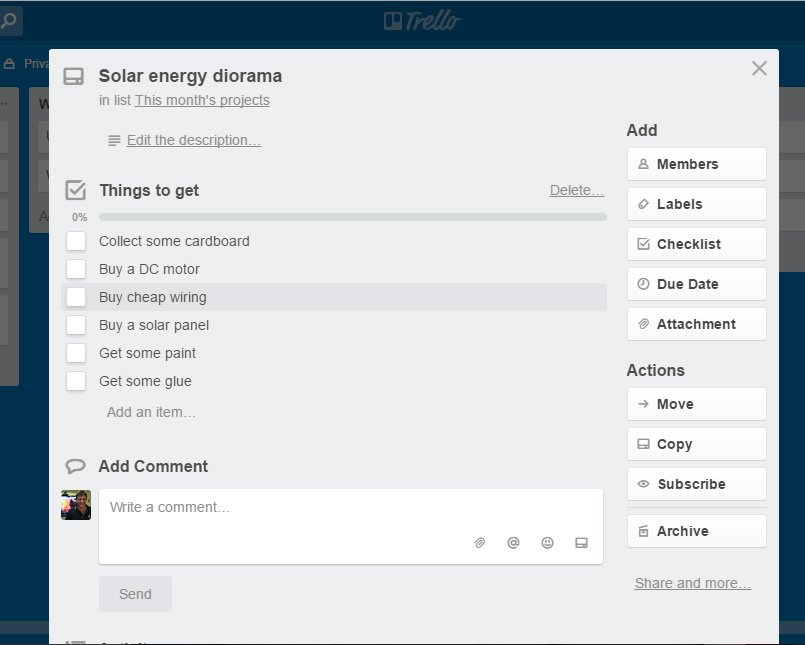
Assign labels, members, checklists, due dates & more to a card in Trello
The great news is that once the students get the hang of Trello, they’ll be soon doing this themselves! For security and child protection you can set privacy settings to invited members only. So having set up Trello, you might be interested in some ideas on how you can use the app not only in your own classroom but across the entire school:
- Links for resources. This is fairly obvious but it still needs to be noted. You could create lists of science websites that you love through to attaching in-house worksheets you’ve created. Maybe linking to the Pinterest boards you’ve been curating would be a handy way of streamlining this.
- Assigning weekly student tasks there are always things that need to be done on a weekly and daily basis in a classroom for it to function properly. Why not record these tasks in Trello and assign responsible students to achieve them? Even simple things like watering the plants or feeding the hermit crabs could be noted. This could be extended to assigning this week’s homework through to lists of what students could be doing in their school. Some schools might find this useful for planning tasks amongst teachers as well, including planning for professional development activities, organising the school dance or even assigning people to stacking the dishwasher!
- Communication to parents. This one might be quite powerful for improving communication between families and your school. You could share this semester’s learning tasks, upcoming events or simply this week’s homework to do.
- Lesson planning and collaborative delivery whether you work by yourself or in a team teaching environment, you still need to plan out what is coming up this semester. Planning out your lessons is very easy using Trello as you could create a list for each teaching week and then assign cards for each lesson. Under each lesson card, you can then note down teaching resources needed, whether you need to book the computer room, lesson objectives, attach worksheets, link to supporting websites and more. You could also list our potential incursions or virtual excursions that would enrich the teaching unit plus invite the rest of teaching faculty to contribute too. If you’re team teaching you could assign tasks to each other so that you coordinate more effectively as you both will know who is doing what by when. A powerful way to use Trello could be done by writing down the curriculum requirements as individual items on a checklist and tick them off as you achieve them!|
- Student collaborative projects. Project-based learning is a major focus these days and getting students to work together can be a challenge but some of the issues can be quickly sorted if they have a central point to collate their thoughts and begin to plan their activities so they can be more effective. Using Trello the students can clearly define the task steps. More importantly, they can make each other accountable as the tasks can be assigned to specific students with a due date that they agree upon. As the software environment is so flexible you can teach students to use Trello as brainstorming space that initially records all of their ideas which they can then break down into steps later on. As a teacher you can then check-in on how each group of students are going by simply visiting their board and seeing what tasks have been completed and what is left to do. You can even put stickers on each task as rewards too!
As you can see, Trello could be an incredibly versatile and effective tool for education. No doubt you can think of other ways you could be using this app in your classroom too! Like always, the outcomes you get will be highly dependent on how you introduce the program to your class and the subsequent support you then provide. Still, if you’re looking for a classroom collaboration tool that is quick and easy to integrate it’s pretty hard to go past this solution. Try it out, you might be surprised how quickly you get hooked!
Happy teaching,
Ben Newsome.
NEW Primary science teaching book!
“Be Amazing! How to teach science, the way primary kids love”
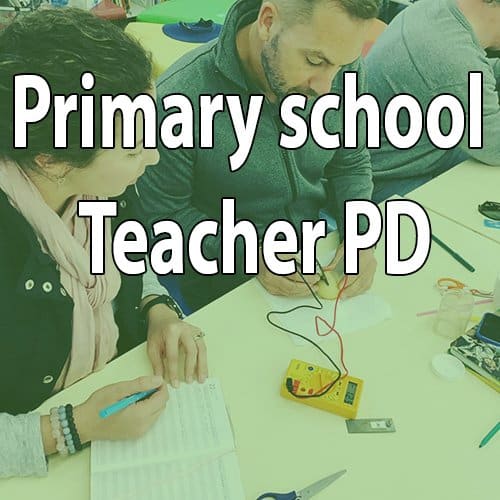

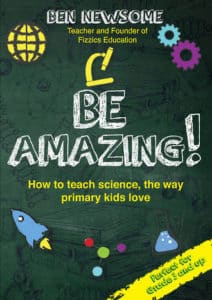

























Comments